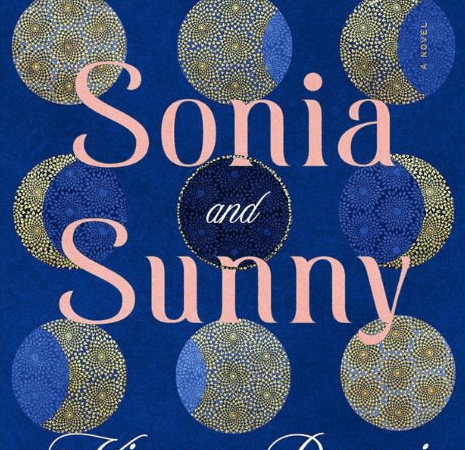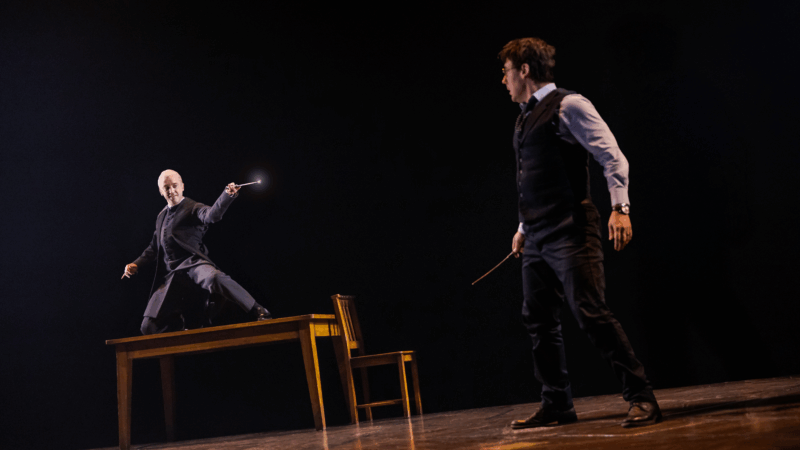‘The Loneliness of Sonia and Sunny’ is a terrific, tangled love story
It took Kiran Desai nearly 20 years to write her new novel, The Loneliness of Sonia and Sunny. I mean this as a sincere tribute when I say I’m amazed it only took her that long.
Desai’s near 700-page novel, which has been shortlisted for the Booker Prize, is about exile and displacement — not only from one’s home country, family and culture, but also from one’s own sense of self. The multi-character, multi-stranded plot roams from locales in India and the U.S. — Delhi, Goa, Vermont, Brooklyn — with side trips to Italy and Mexico.
This is a novel of ideas, as well as, at its most elemental, a tangled love story. Desai’s characters inhabit a complex post-modern, post-colonial world and, yet, her own sensibility as a novelist is playfully old-fashioned. Consider the contrivance Desai brazenly concocts to enable a central moment of this story: a chance meeting on an overnight train between the two title characters after they’ve each rejected their own families’ formal attempts to arrange a marriage between them. Dickens, himself, might have blushed.
There are plenty of complications, however, before and after that fateful moment. When the novel opens in the late 1990s, Sonia is a depressed college student in Vermont, who hasn’t been back to India in two years. Her grandparents, her lifeline back home, are baffled. Here’s a sampling of a phone conversation a tearful Sonia has with her grandfather:
“[W]hat are you crying for, you lucky girl?”
Sonia tried to explain. “I’ve ballooned in my own head. I cannot stop thinking about myself and my problems. I’m dreading the winter. In the dark and cold, it will get worse —”
“Do some jumping jacks, get your spirits up, and then pick up your books.”
The miscommunication there is generational, cultural and temperamental; tragically, it makes the isolated Sonia ripe for the picking by a visiting art monster — a painter named Ilan.
Early in their affair, Ilan boasts to the impressionable Sonia: “[M]aybe I will paint a picture that the whole world will know and you’ll become angry and feel you don’t exist outside the painting.” And, he does just that, appropriating her body and an intimate moment of shame in his art for all to see.
Just as damaging is Ilan’s theft of a treasured amulet that Sonia inherited from her German grandfather. Without that amulet, depicting a demon protector, Sonia feels bereft.
But, what of Sunny, our other protagonist here? He, too, has left India for the U.S. where we first meet him, working for the Associated Press. A prime motivation for Sunny’s move was his domineering mother, Babita; we’re told “[Sunny] had thought he would be able to love her better from New York.”
Instead, Sunny finds himself editing his life for his mother; for instance, hiding the existence of his live-in girlfriend — a Nordic Midwesterner named Ulla. In one of the many black comedy set pieces in this novel, Ulla takes Sunny home to Kansas to meet her folks. Here are some snippets from that visit, mostly seen from Ulla’s anxious perspective:
[Ulla] didn’t want Sunny to find her father’s Consumer Reports in the basket by his reclining chair. She didn’t want her father to tell Sunny he’d found an excellent deal on his own tombstone. …
Ulla had told Sunny he was not to say anything complimentary about socialism or Jimmy Carter or even Bill Clinton. …
Ulla, vigilant to both sides, saw that Sunny was not able to perform to his eccentric self, that her parents’ bawdy humor was oppressed. … They passed the beans and the corn bread. The ticktock asserted itself while her mother wondered if it was safe to say she had enjoyed the movie Gandhi. Maybe “enjoyed” was not the word.
What hope is there for us to understand each other, let alone ourselves, when so much of human interaction is performance? Sonia, a writer, considers that question as it applies to art, recognizing the danger of packaging an “exotic” India in her writing for the “enticement of white people.” “Would the dilemma vanish [Sonia wonders] if the abundance of stories grew as abundant as life itself?”
In The Loneliness of Sonia and Sunny, Desai has come close to achieving that ideal. This is a spectacular novel — nearly “as abundant as life itself” — to savor, ruminate over, and, yes, even reread.
FBI Deputy Director Dan Bongino says he will step down in January
Bongino's tenure was at times tumultuous, including a clash with Justice Department leadership over the Epstein files. But it also involved the arrest of a suspect in the Jan. 6 pipe bomber case.
Federal court says troops can stay in D.C., and hints at prolonged deployment
A federal appeals court in Washington, D.C. has ruled that National Guard troops can remain in the city for now. That decision comes after a different federal appeals court ruled that troops must leave Los Angeles earlier this week.
Jack Smith defends his prosecutions of Trump in closed-door session in Congress
The former Justice Department special counsel told the House Judiciary Committee that his team developed "proof beyond a reasonable doubt" that Trump took part in a criminal scheme to overturn the 2020 election.
A Chinese man who filmed secret footage in Xinjiang risks deportation from the U.S.
Guan Heng sailed to the U.S. by boat from the Bahamas after publishing footage he filmed of purported detention camps in China. He has been held in immigration detention since August.
‘Harry Potter’ fans are flying to Broadway to see the original Draco Malfoy
Almost eight years after Harry Potter and the Cursed Child opened on Broadway, Tom Felton, who played Draco Malfoy in the films, is now playing him as an adult onstage.
A photographer discovers miles of dinosaur tracks near Italy’s Winter Olympic venues
A nature photographer stumbled upon thousands of 210-million-year-old dinosaur tracks in Italy's central Alps, near where some Olympic skiing and snowboarding events will be held in February.









